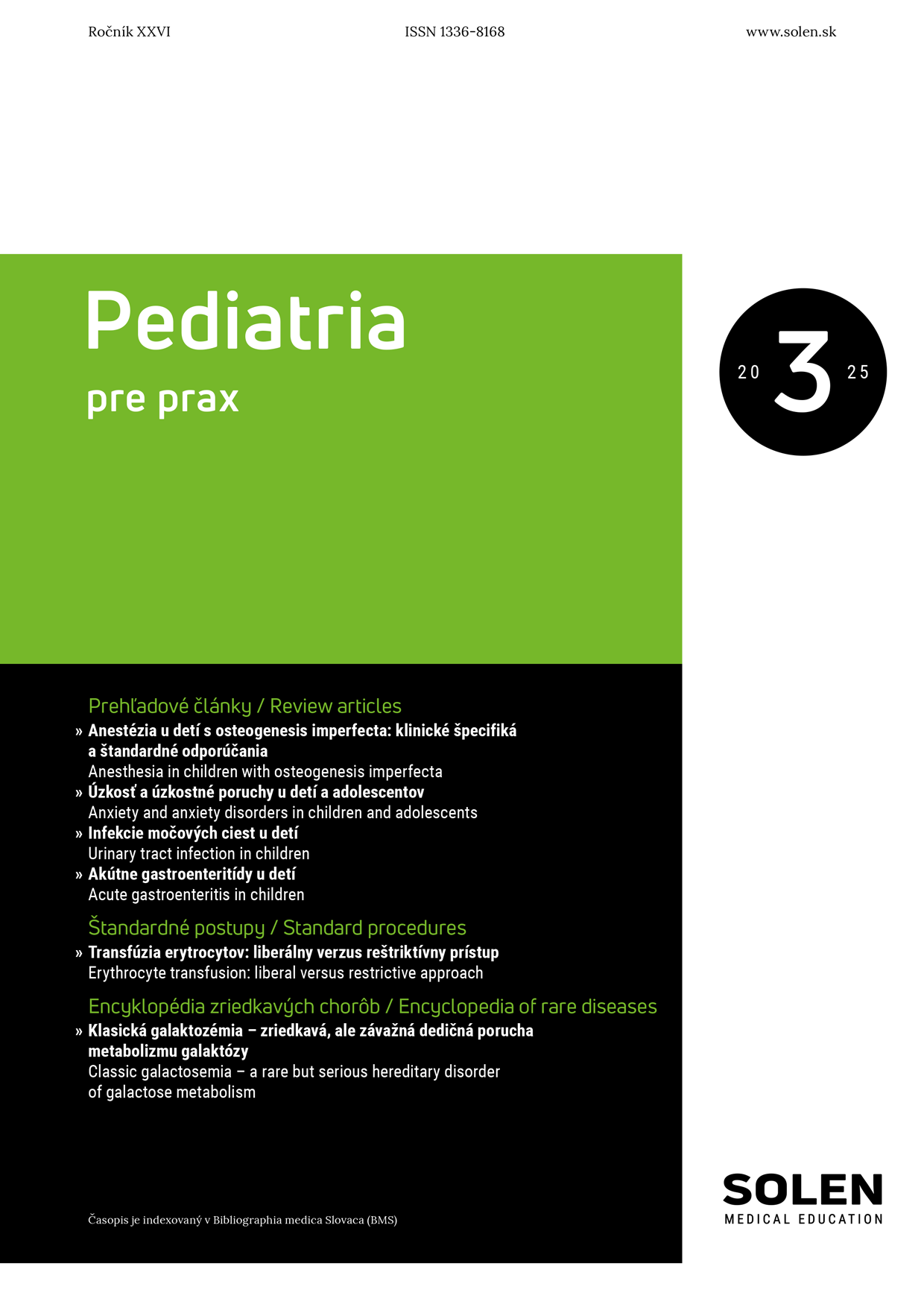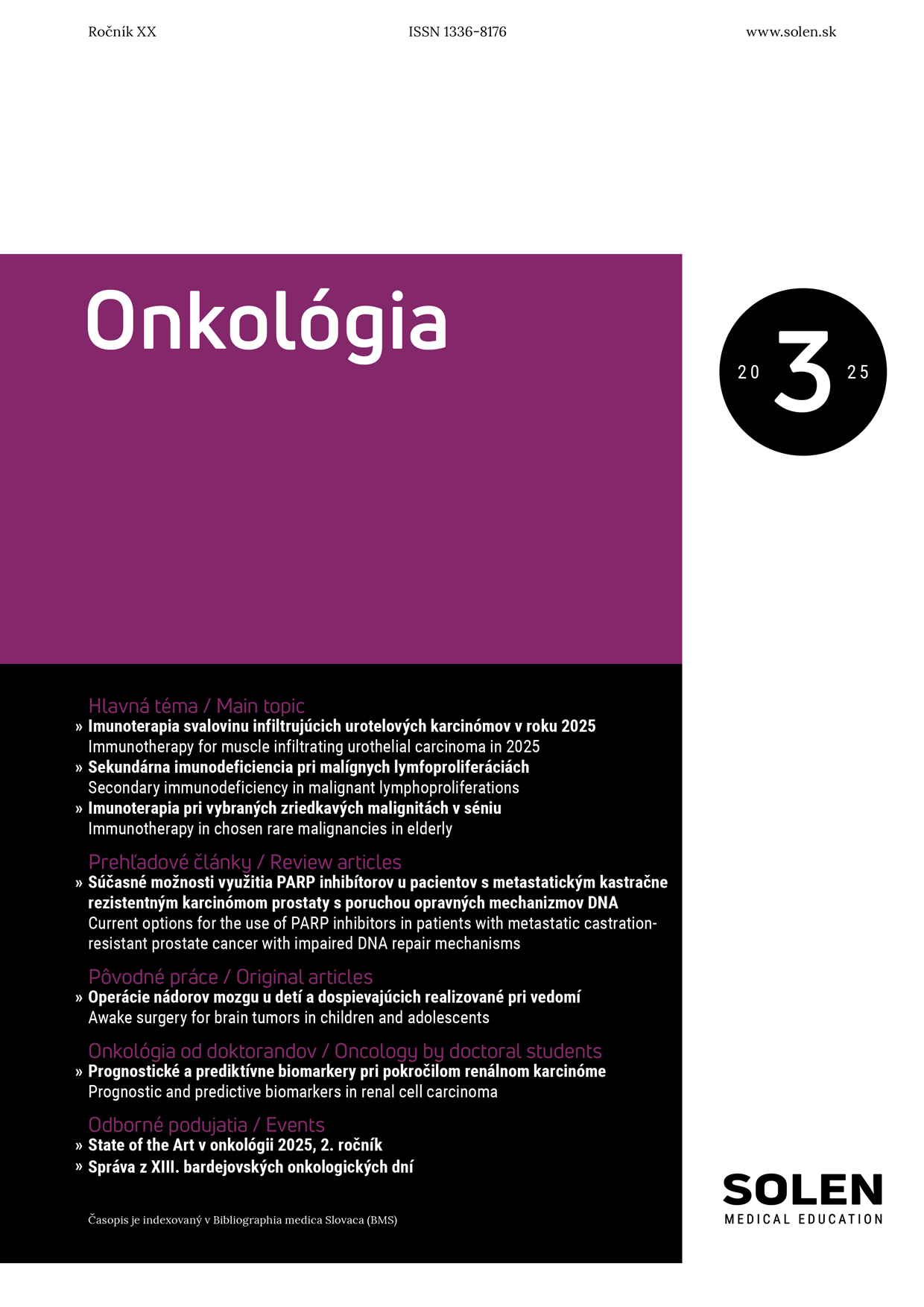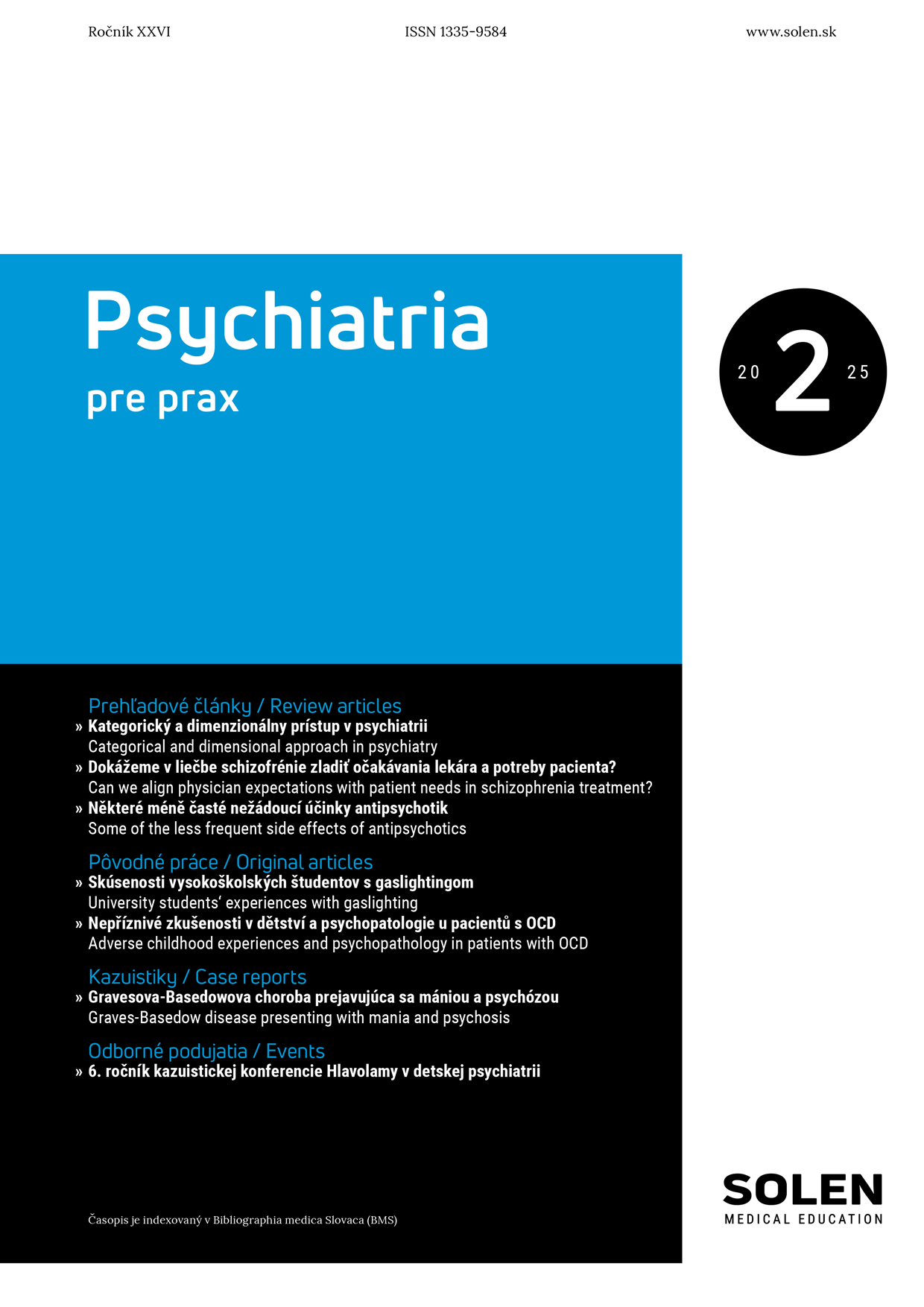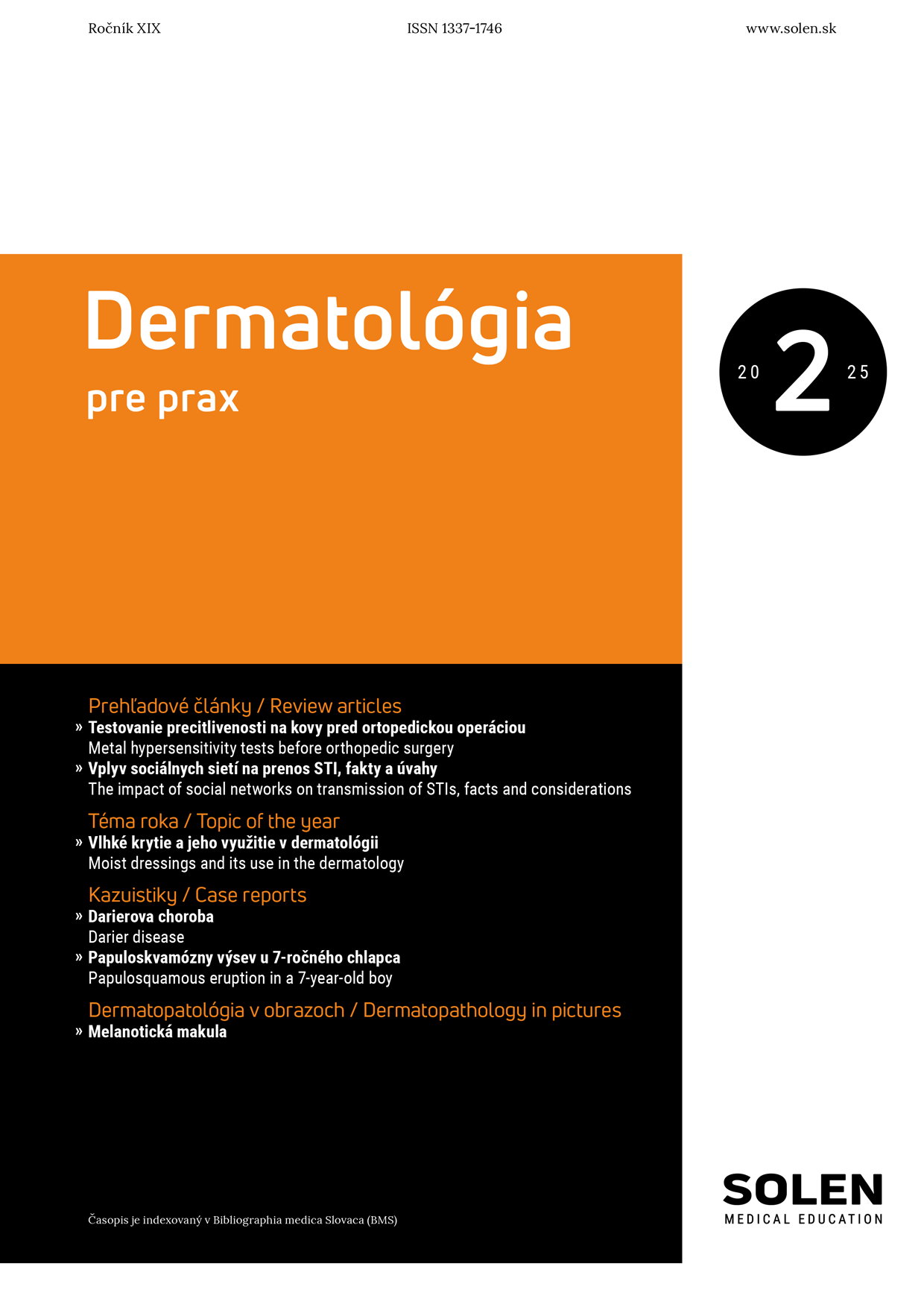Psychiatria pre prax 4/2010
Antinociceptívny efekt venlafaxínu
Venlafaxín je duálne pôsobiace antidepresívum zo skupiny SNRI so sérotoninergným a noradrenergným účinkom. V klinickej praxi sa majoritne využíva jeho antidepresívne a anxiolytické pôsobenie. Okrem nich sa však vyznačuje antinociceptívnym efektom porovnateľným s tricyklickými antidepresívnymi preparátmi. Ten je výsledkom nielen inhibície spätného vychytávania sérotonínu a noradrenalínu, ale aj rozličných aktivít v supraspinálnych a spinálnych mechanizmoch. Praktický benefit z jeho analgetického účinku je prínosný nielen pre psychiatriu, ale aj mnohé somatické vetvy medicíny.
Kľúčové slová: venlafaxín, tramadol, SNRI, bolesť, antinociceptívny efekt.
Antinociceptive effect of venlafaxine
Venlafaxine is a dual acting antidepressant of the SNRIs group with serotoninergic and noradrenergic effect. In clinical practice it is mainly used for it´s antidepressant and anxiolytic activity. In addition to these features, it is characterized with antinociceptive effect comparable to tricyclic antidepressant drugs. This is the result of reuptake inhibition of both serotonin and norepinephrine, but also various activities in the supraspinal and spinal mechanisms. The practical benefit of its analgesic effect is fruitful not only for psychiatry, but also many of the somatic branches of medicine.
Keywords: venlafaxine, tramadol, SNRI, pain, antinociceptive effect.

















